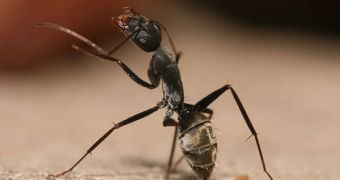Naturalists and biologists were amazed at the discovery of one of the most dangerous, invasive and subversive species of fungus ever known to man, which displays a remarkable activity of ensuring its survival. It can take control of carpenter ants' brains, and turns them into zombies, which are then manipulating into dying in a place that suits the fungus best. The exact mechanisms that the parasite employs to control the insects' brains are not yet understood, but they are highly effective.
The carpenter ants of these studies were observed at a remote location in Thailand, were they construct their nests high up in the trees of preferably dead and damp forests. In their quest for food, they need to descend to ground level, in order to forage through the forest floor. But they share the trees with a parasite that would make them run in terror if they knew about it – the Ophiocordyceps unilateralis fungus. This neighbor is able to secrete substances that essentially take control of the ants' brains, forcing them to travel large distances before dying at a place that suits the parasite.
Once an ant gets infected, it travels downwards from the canopy until it reaches the lower leaves, after which it clamps hard with its strong mandibles on them and dies. Even after death, the parasite does not leave their body. Investigations have revealed that the fungus still remains inside them, secreting substances that turn the insects' innards into processable sugar that feeds future generations of O. unilateralis. However, studies have shown that the mandible muscles, required to keep the ant attached to the leaf, are left untouched.
Additionally, the fungus does not break the outer shell of the ant. Rather, it grows through cracks, thus making a strong home for itself that cannot be easily invaded by other parasites or fungi. “The fungus has evolved a suite of novel strategies to retain possession of its precious resource. The fungus accurately manipulates the infected ants into dying where the parasite prefers to be, by making the ants travel a long way during the last hours of their lives,” explains Harvard University expert David P. Hughes, the lead author of the new study, quoted by LiveScience.
Hughes adds that the ants show a remarkable feat of adaptation by avoiding foraging under infected areas, most likely for fear of contamination. The fact that they make their nests high up in the trees may also hint at an escape strategy. He concludes that, at this point, scientists are in the dark about how the fungus takes so precise control of the ants, but that future studies could clear that up. “That is another research area we are actively pursuing right now,” he says.

 14 DAY TRIAL //
14 DAY TRIAL //